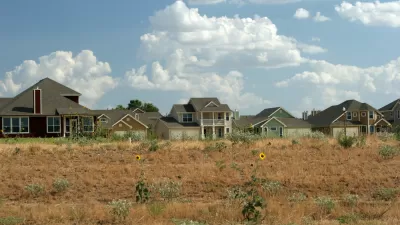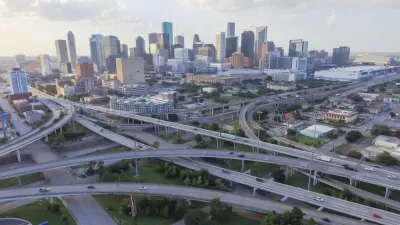An op-ed in the New York Times provides a firsthand account of the growing concern over water in a state that has yet to set limits on its explosive growth.
Richard Parker writes a dispatch from his hometown of Wimberley, Texas. "Normally, my small town is a placid place nestled in the Texas Hill Country, far from controversy, a peaceful hour’s drive west of Austin," explains Parker.
"But these are not normal times. The suburbs of Austin close in every year. Recently, the suburb of Buda and developers enlisted a company from faraway Houston to drain part of the Trinity Aquifer, the source of the Hill Country’s water. An old-fashioned, Western-style water war has erupted.
Across Texas and the Southwest, the scene is repeated in the face of a triple threat: booming population, looming drought and the worsening effects of climate change."
Parker goes on to provide a history of water's empowering effects for Texas when it is in full supply and its catastrophic effects when it disappears, as it did for "the people called the 'Ancient Ones' — the Mimbres, Mogollon, Chaco and other Native American cultures," which flourished around 800 CE and had all but disappeared by 1200 due to a prolonged drought and poor management of water resources.
Parker also notes specific examples of the "race to engineer a new solution," but while cities like Austin, San Antonio, Las Vegas, and Los Angeles hang in the balance, the question still remains whether the Southwestern United States can overcome a megadrought.
FULL STORY: The Southwestern Water Wars

Maui's Vacation Rental Debate Turns Ugly
Verbal attacks, misinformation campaigns and fistfights plague a high-stakes debate to convert thousands of vacation rentals into long-term housing.

Planetizen Federal Action Tracker
A weekly monitor of how Trump’s orders and actions are impacting planners and planning in America.

Chicago’s Ghost Rails
Just beneath the surface of the modern city lie the remnants of its expansive early 20th-century streetcar system.

Bend, Oregon Zoning Reforms Prioritize Small-Scale Housing
The city altered its zoning code to allow multi-family housing and eliminated parking mandates citywide.

Amtrak Cutting Jobs, Funding to High-Speed Rail
The agency plans to cut 10 percent of its workforce and has confirmed it will not fund new high-speed rail projects.

LA Denies Basic Services to Unhoused Residents
The city has repeatedly failed to respond to requests for trash pickup at encampment sites, and eliminated a program that provided mobile showers and toilets.
Urban Design for Planners 1: Software Tools
This six-course series explores essential urban design concepts using open source software and equips planners with the tools they need to participate fully in the urban design process.
Planning for Universal Design
Learn the tools for implementing Universal Design in planning regulations.
planning NEXT
Appalachian Highlands Housing Partners
Mpact (founded as Rail~Volution)
City of Camden Redevelopment Agency
City of Astoria
City of Portland
City of Laramie





























